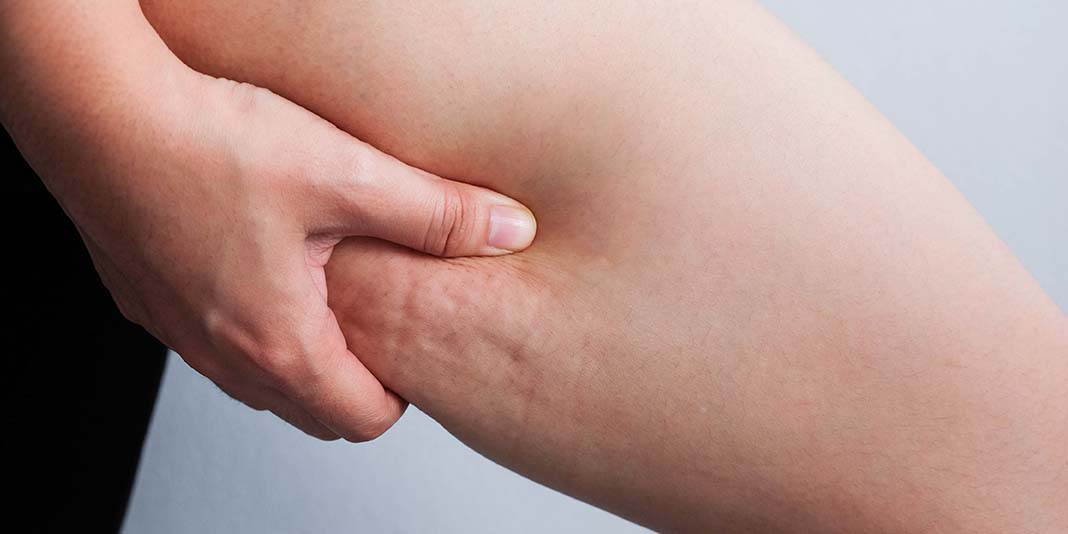The Scientists: The co-founders of YouBeauty.com are Mehmet Oz, M.D., a cardiothorasic surgeon, and Michael Roizen, M.D., Chief Wellness Officer at the Cleveland Clinic.The Answer: You know cellulite when you see it: dimpled skin that looks a bit like orange peel—or the dreaded cottage cheese.That bumpy effect occurs when collagen just below the skin deteriorates. Under your skin is a layer of adipose tissue (fat) that is connected to the skin by a latticework of supporting collagen fibers. When these fibers stretch or break down, which happens naturally over time and is quickened by UV exposure, the fat cells can squeeze through, pushing into the reticular dermis—that lower layer of skin—and creating those telltale hills and valleys.MORE: The Science of Your SkinImagine you’ve stretched a stocking taut and placed a slab of Jell-O on top of it. If the stocking remains just so, the Jell-O stays put. But in the likely event that the stocking stretches, or one of the threads pops and you get a run, some Jell-O will ooze through, creating a bulge on the other side. A bunch of bulges and you’ve got cellulite.Everyone has a layer of adipose tissue—even supermodels—so no one is immune to cellulite. In fact, 80-90 percent of women get it. It usually shows up around your hips, thighs, stomach and buttocks because the fat deposits in those areas are particularly close to the skin.Certain factors, including fad dieting, a slow metabolism, dehydration and genetics might play a role in who gets cellulite. People with higher BMIs have been shown to have weaker connective tissue, which makes cellulite more likely. Unfortunately, once you have it, there’s not much you can do. Weight loss, exercise, massages, wraps, creams, supplements and surgery aren’t likely to treat it.MORE: Scrub Your Way To Softer SkinThe good news is you can take steps to prevent or limit it. Estrogen plays a role in fat storage and connective tissue strength, which contribute to cellulite formation (hence the prevalence in women). Exercising regularly and maintaining a healthy weight helps keep hormones in balance. Plus, keeping your weight in check means less fat pushing out toward the skin. Vitamin C helps strengthen collagen, so munching on lots of yummy citrus, papaya and kiwi is good for those connective tissues. Think of it as eating an orange to keep from looking like one.
© YouBeauty 2024




































